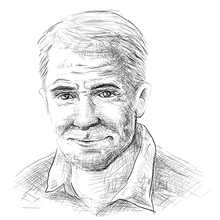'DO YOU CONSUME OR DO YOU CREATE?'
- 정훈 신
- 2021년 10월 15일
- 2분 분량
When you gaze at (응시하다) a painting, are you the one admiring it or are you the one putting on the final touches? When you watch a video, are you the one pointing and criticizing, or are you the one making the edits (편집하다)? When you see what someone else did, do you wish you did that, or are you figuring out (생각해 내다) how to replicate (복 제하다) the steps they took? It’s easy to let things come to you, like a gust of wind (확 몰아치 는 바람) that blows in your direction. It’s much more difficult to produce things. Anything you create and show to the outside world will get exposed to harsh elements, such as criticism, shame, and doubt. Still, it is something you must do if you want to achieve anything.
What are you up to today? For every hour that you’re taking things in, are you spending more hours putting things out? Do you let things happen to you, or do you proactively make them happen?
When we try things, we don’t always get it right. We spend our time headed in the wrong direction. Our actions lead to adverse (부정적인) results. That’s how it is sometimes – the more risks you take, the more likely you’ll make mistakes. And they will happen. But once in a while, something special happens. Out of those thousands of hours of effort, you might actually get the result you want for once. Or, your result might even exceed (초월하다) expectations. Out of Picasso’s 147,800 works, less than a dozen became notable (주목할 만 한) works. Imagine that: over a 75-year career span (경력), maybe one piece of art emerged (모습을 드러내다) as a masterpiece for every tens of thousands of works produced. Creating is frustrating. It’s tiring. It can even be painful. But when you push through those difficulties, you’ll find that creating produces greater rewards than consuming in the long run (결국에는).




댓글